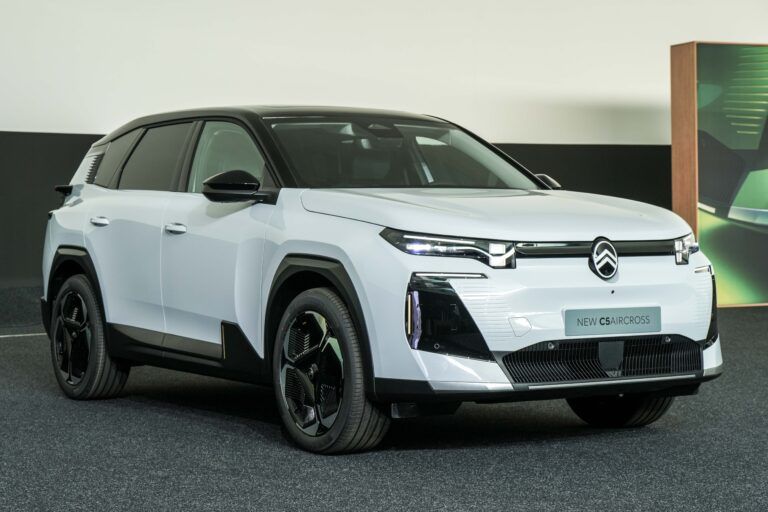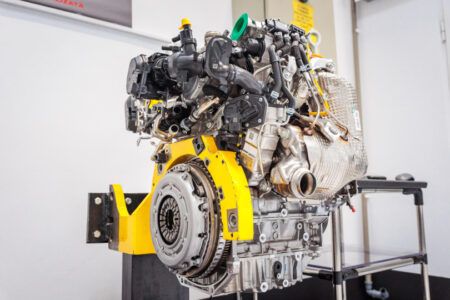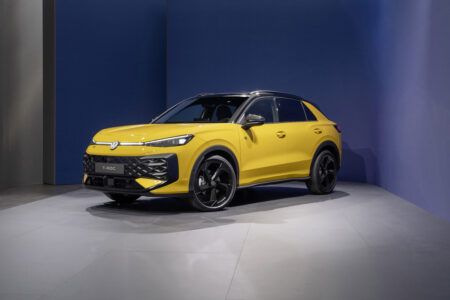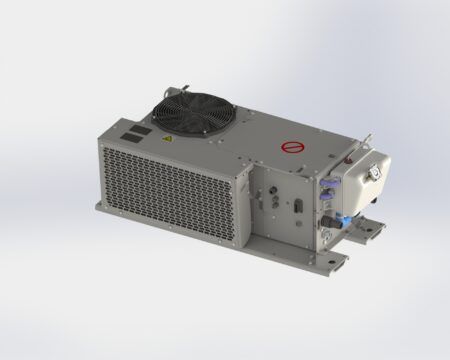Citroën has revealed its second-generation C5 Aircross, completing a comprehensive two-year renewal of its model lineup. Built on the Stellantis STLA-Medium platform, the redesigned SUV will launch in European markets in the second half of 2025 with a focus on electrified powertrains.
The all-electric ë-C5 Aircross offers two powertrain options. The entry-level variant delivers 210 horsepower with a 73 kWh battery providing up to 520 km range, while the long-range model produces 230 horsepower with a larger 97 kWh battery extending range to 680 km.
Charging capabilities are competitive within the segment, with both models using a standard 11 kW three-phase onboard charger. The 73 kWh battery charges from 20-80% in 30 minutes on a 160 kW fast charger, while the 97 kWh version accomplishes the same in 27 minutes. From 2026, an optional 22 kW bi-directional charger will be available, capable of adding 160 km range in just ten minutes.
The plug-in hybrid version combines a 150 horsepower 1.6-liter turbo engine with a 125 horsepower electric motor, delivering a combined 195 horsepower. It offers 86 km of average electric range – a 33% improvement over its predecessor – and exceeds 100 km in urban environments. The hybrid’s 55-liter fuel tank provides a total range of 650 km for long journeys.
For those beginning their electrification journey, the mild hybrid 145 horsepower option pairs a 136 horsepower 1.2-liter engine with a 12 horsepower electric motor in a 48V system, reducing fuel consumption by approximately 15% compared to non-hybrid models.
The C5 Aircross incorporates several sustainability features, including 47 kg of recycled or bio-sourced plastics and 160 kg of recycled metals. Most notably, it’s the world’s first vehicle to incorporate vine shoots from organic Burgundy vineyards into plastic components.
Developed in France and assembled at Citroën’s Rennes plant, the C5 Aircross benefits from domestic battery production as well. The 97 kWh battery pack is manufactured at the ACC gigafactory in Douvrin, while the electric drive components are produced at facilities in Trémery and Valenciennes.





